Service Mesh lite
An Ingress solution (either hardware or virtualized or containerized) typically performs L7 proxy functions for north-south (N-S) traffic. The Service Mesh lite architecture uses the same Ingress solution to manage east-west traffic as well.
In a standard Kubernetes deployment, east-west (E-W) traffic traverses the built-in kube-proxy deployed in each node. Kube-proxy is an L4 proxy that can only perform TCP/UDP based load balancing and cannot offer the benefits provided by an L7 proxy.
NetScaler (MPX, VPX, or CPX) can provide the benefits of L7 proxy for E-W traffic such as:
- Mutual TLS and SSL offload.
- Content based routing, allow or block traffic based on HTTP and HTTPS header parameters.
- Advanced load balancing algorithms (least connections or least response time).
- Observability of east-west traffic through measuring golden signals (errors, latencies, saturation, traffic volume). NetScaler ADM Service Graph is an observability solution to monitor and debug microservices.
A Service Mesh architecture (such as Istio or LinkerD) is complex to manage. Service Mesh lite architecture is a lightweight version and much simpler to get started to achieve the same requirements.
To configure east-west communication with NetScaler CPX in a Service mesh lite architecture, you must first understand how the kube-proxy is configured to manage east-west traffic.
East-west communication with kube-proxy
When you create a Kubernetes deployment for a microservice, Kubernetes deploys a set of pods based on the replica count. To access those pods, you create a Kubernetes service which provides an abstraction to access those pods. The abstraction is provided by assigning a Cluster IP address to the service.
Kubernetes DNS gets populated with an address record that maps the service name with the Cluster IP address. So, when an application, say tea wants to access a microservice named coffee then DNS returns the Cluster IP address of the coffee service to the tea application. The tea application initiates a connection which is then intercepted by kube-proxy to load balance it to a set of coffee pods.
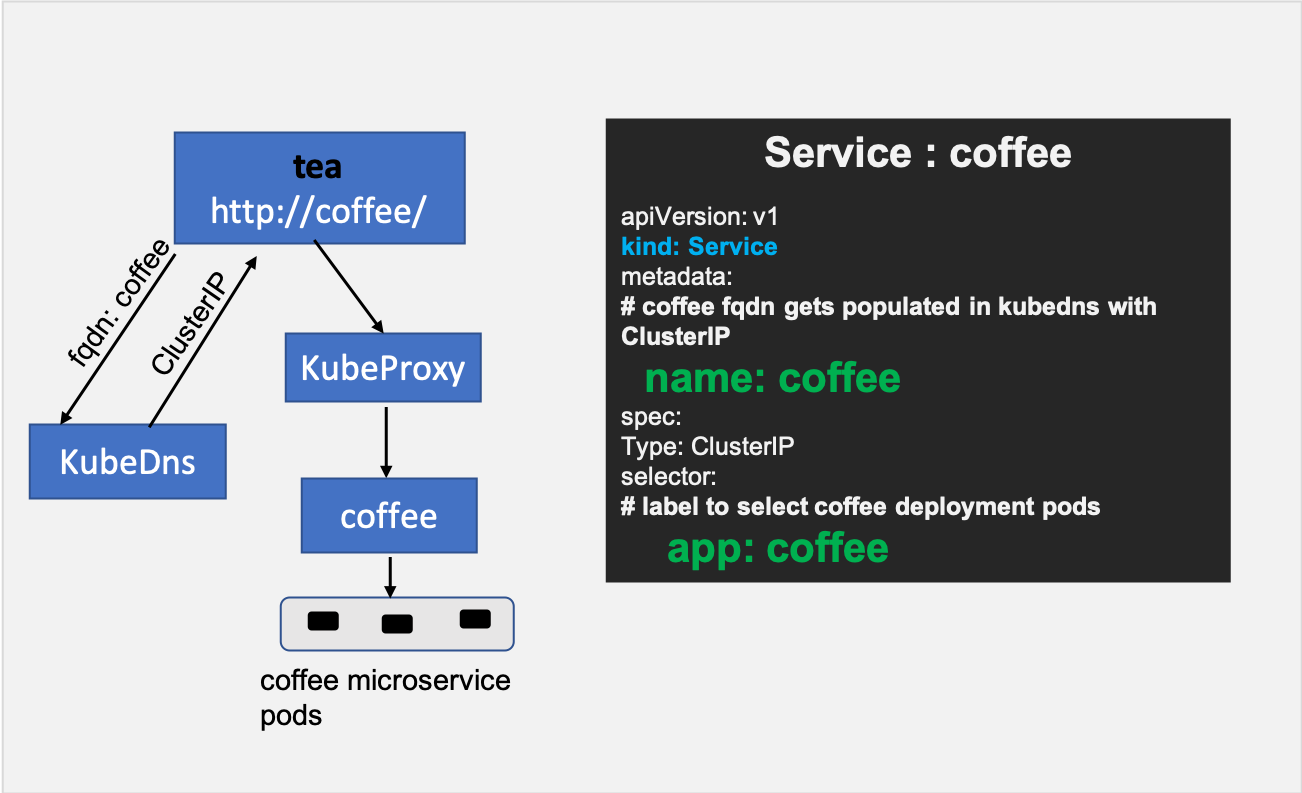
East-west communication with NetScaler CPX in Service Mesh Lite architecture
The goal is to insert the NetScaler CPX in the east-west path and use the Ingress rules to control this traffic.
Perform the following steps to configure east-west communication with NetScaler CPX.
Step 1: Modify the coffee service definition to point to NetScaler CPX
For NetScaler CPX to manage east-west traffic, the FQDN of the microservice (for example, coffee) should point to the NetScaler CPX IP address instead of the Cluster IP of the target microservice (coffee). (This NetScaler CPX deployment can be the same as the Ingress NetScaler CPX device.) After this modification, when a pod in the Kubernetes cluster resolves the FQDN for the coffee service, the IP address of the NetScaler CPX is returned.
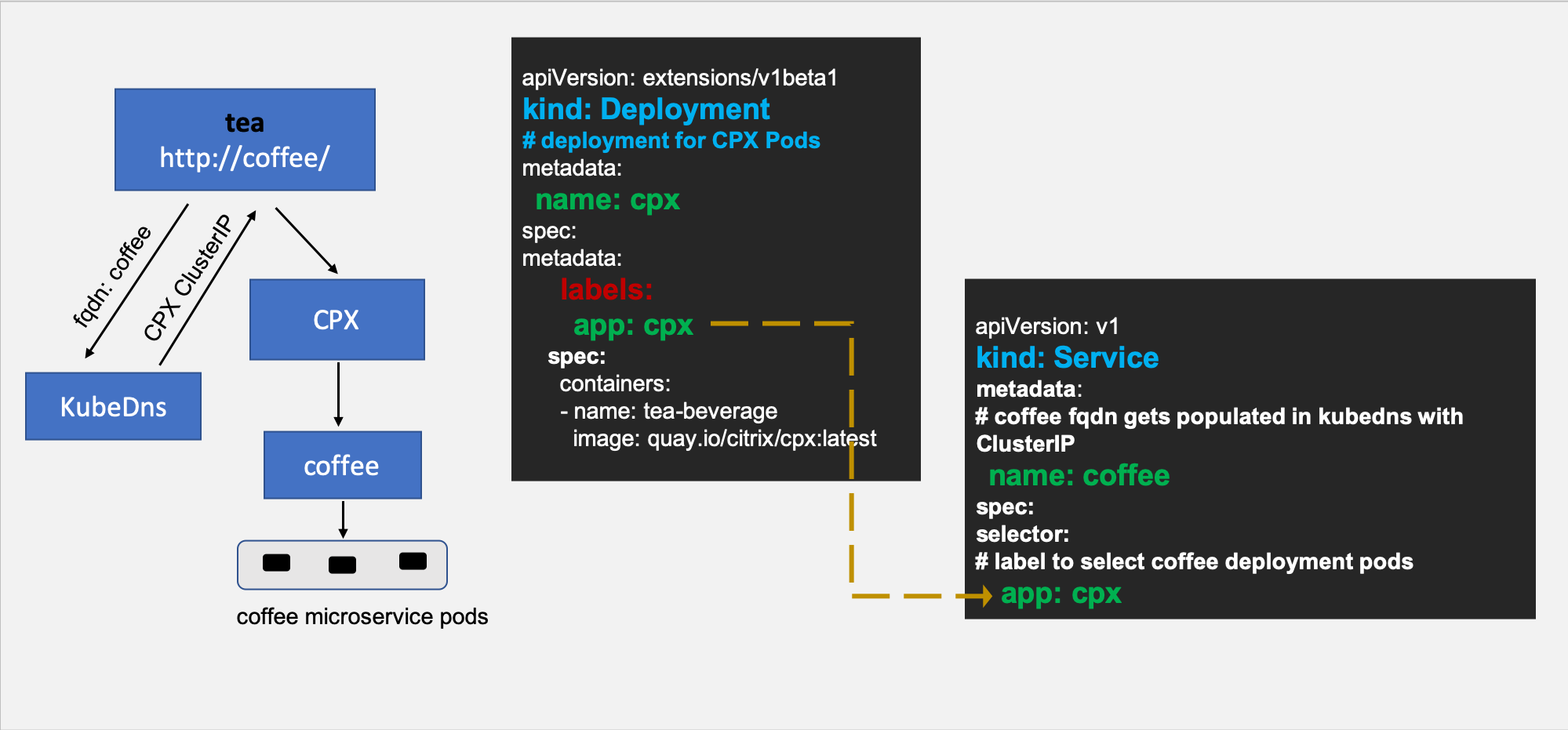
Note:
If you are deploying service mesh lite to bring up the service graph in NetScaler ADM for observability, then you should add the label
citrix-adc: cpxin all the services of your application which are pointing to the NetScaler CPX IP address after modifying the service.
Step 2: Create a headless service named coffee-headless for coffee microservice pods
Since you have modified the coffee service to point to NetScaler CPX, you need to create one more service that represents coffee microservice deployment.
The following is a sample headless service resource:
apiVersion: v1
kind: Service
metadata:
name: coffee-headless
spec:
#headless Service
clusterIP: None
ports:
- name: coffee-443
port: 443
targetPort: 443
selector:
name: coffee-deployment
<!--NeedCopy-->
Step 3: Create an Ingress resource with rules for the coffee-headless service
With the changes in the previous steps, you are now ready to create an Ingress object that configures the NetScaler CPX to control the east-west traffic to the coffee microservice pods.
The following is a sample Ingress resource:
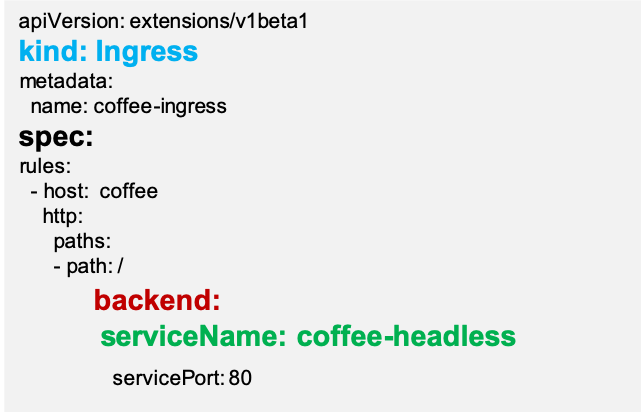
Using the usual Ingress load balancing methodology with these changes, NetScaler CPX can now load balance the east-west traffic. The following diagrams show how the NetScaler CPX Service Mesh Lite architecture provides L7 proxying for east-west communication between tea and coffee microservices using the Ingress rules:
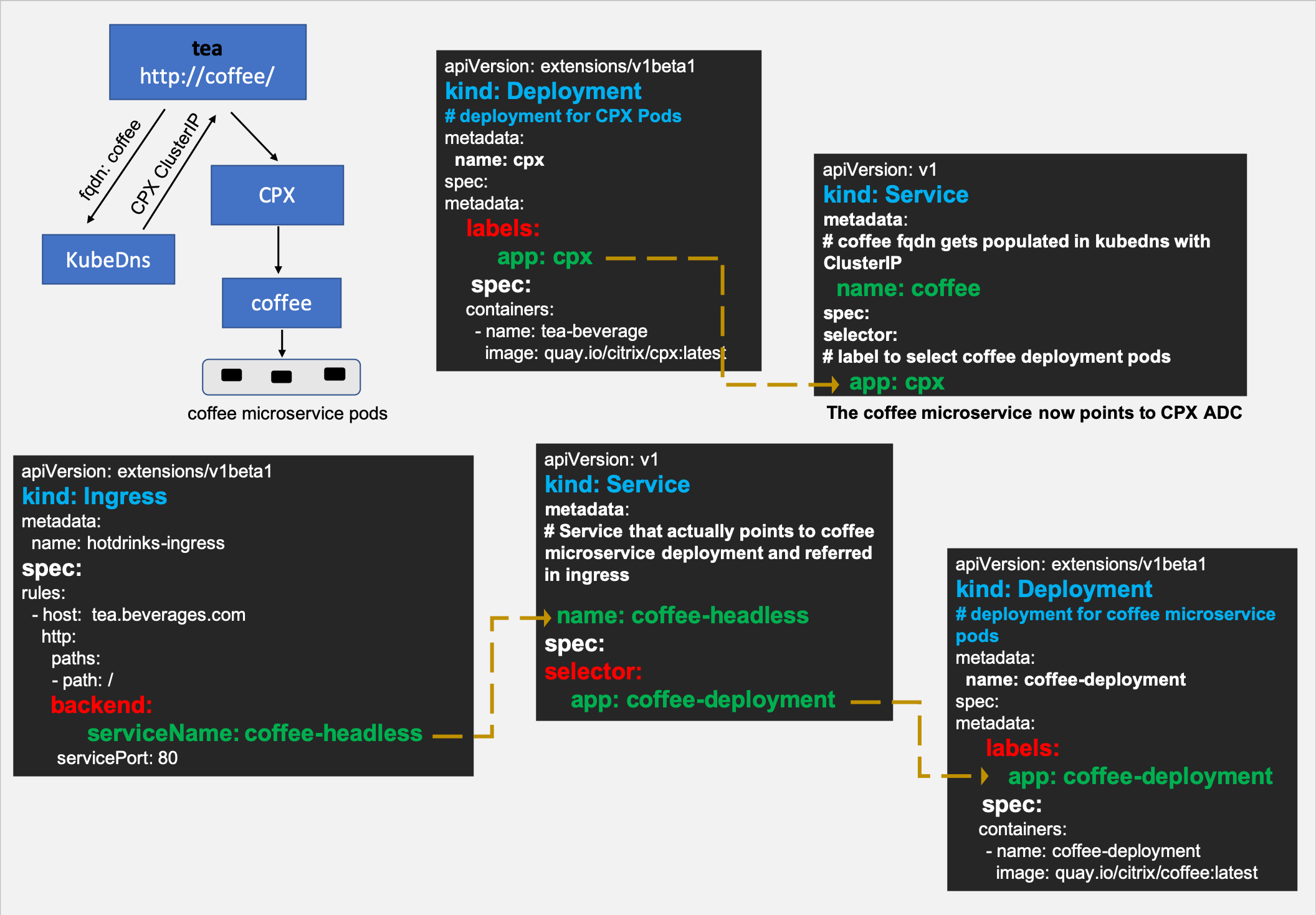
East-west communication with NetScaler MPX or VPX in Service Mesh lite architecture
NetScaler MPX or VPX acting as an Ingress can also load balance east-west microservice communication in a similar way as mentioned in the previous section with slight modifications. The following procedure shows how to achieve the same.
Step 1: Create an external service resolving the coffee host name to NetScaler MPX/VPX IP address
There are two ways to do it. You can add an external service mapping a host name or by using an IP address.
Mapping by a host name (CNAME)
- Create a domain name for the Ingress endpoint IP address(Content Switching virtual server IP address) in NetScaler MPX or VPX (for example,
myadc–instance1.us-east-1.mydomain.com) and update it in your DNS server. - Create a Kubernetes service for
coffeewithexternalNameasmyadc–instance1.us-east-1.mydomain.com. - Now, when any pod looks up for the
coffeemicroservice aCNAME(myadc–instance1.us-east-1.mydomain.com) is returned.
kind: Service
apiVersion: v1
metadata:
name: coffee
spec:
type: ExternalName
externalName: myadc–instance1.us-east-1.mydomain.com
<!--NeedCopy-->
Mapping a host name to an IP address
When you want your application to use the host name coffee that will redirect to the virtual IP address hosted in NetScaler MPX or VPX, you can create the following:
---
kind: "Service"
apiVersion: "v1"
metadata:
name: "coffee"
spec:
ports:
-
name: "coffee"
protocol: "TCP"
port: 80
---
kind: "Endpoints"
apiVersion: "v1"
metadata:
name: "coffee"
subsets:
-
addresses:
-
ip: "1.1.1.1" # Ingress IP in MPX
ports:
-
port: 80
name: "coffee"
<!--NeedCopy-->
Step 2: Create a headless service for microservice pods
Since you have modified the coffee service to point to NetScaler MPX, you need to create one more service that represents coffee microservice deployment.
Step 3: Create an Ingress resource
Create an Ingress resource using the ingress.citrix.com/frontend-ip annotation where the value matches the Ingress endpoint IP address in NetScaler MPX or VPX.
Now, you can create an Ingress object that configures the NetScaler MPX or VPX to control the east-west traffic to the coffee microservice pods.
The following is a sample ingress resource:
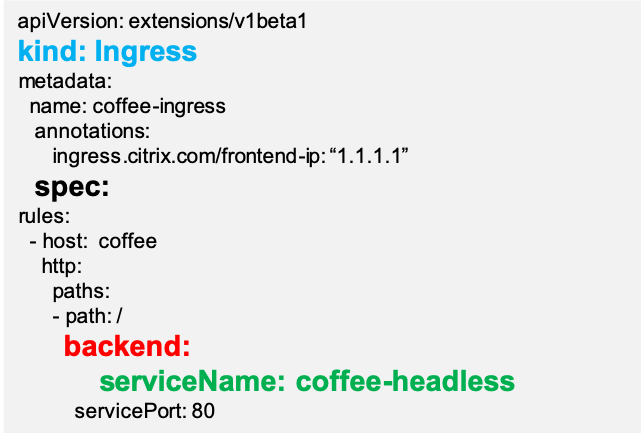
Using the usual ingress load balancing methodology with these changes NetScaler MPX can now load balance east-west traffic. The following diagram shows a NetScaler MPX or VPX configured as the N-S and E-W proxy using the Ingress rules.

Automated deployment of applications in Service Mesh lite
To deploy an application in a Service Mesh lite architecture, you need to perform multiple tasks manually. However, when you want to deploy multiple applications which consist of several microservices, you have an easier way to deploy the services in a Service Mesh lite architecture. NetScaler® provides you an automated way to generate ready to deploy YAMLs.
This document provides information on how to generate all the necessary YAMLs for Service Mesh lite deployment from your existing YAMLs using the NetScaler provided script.